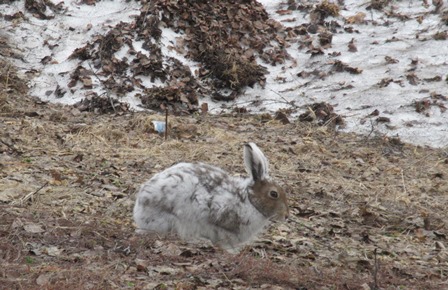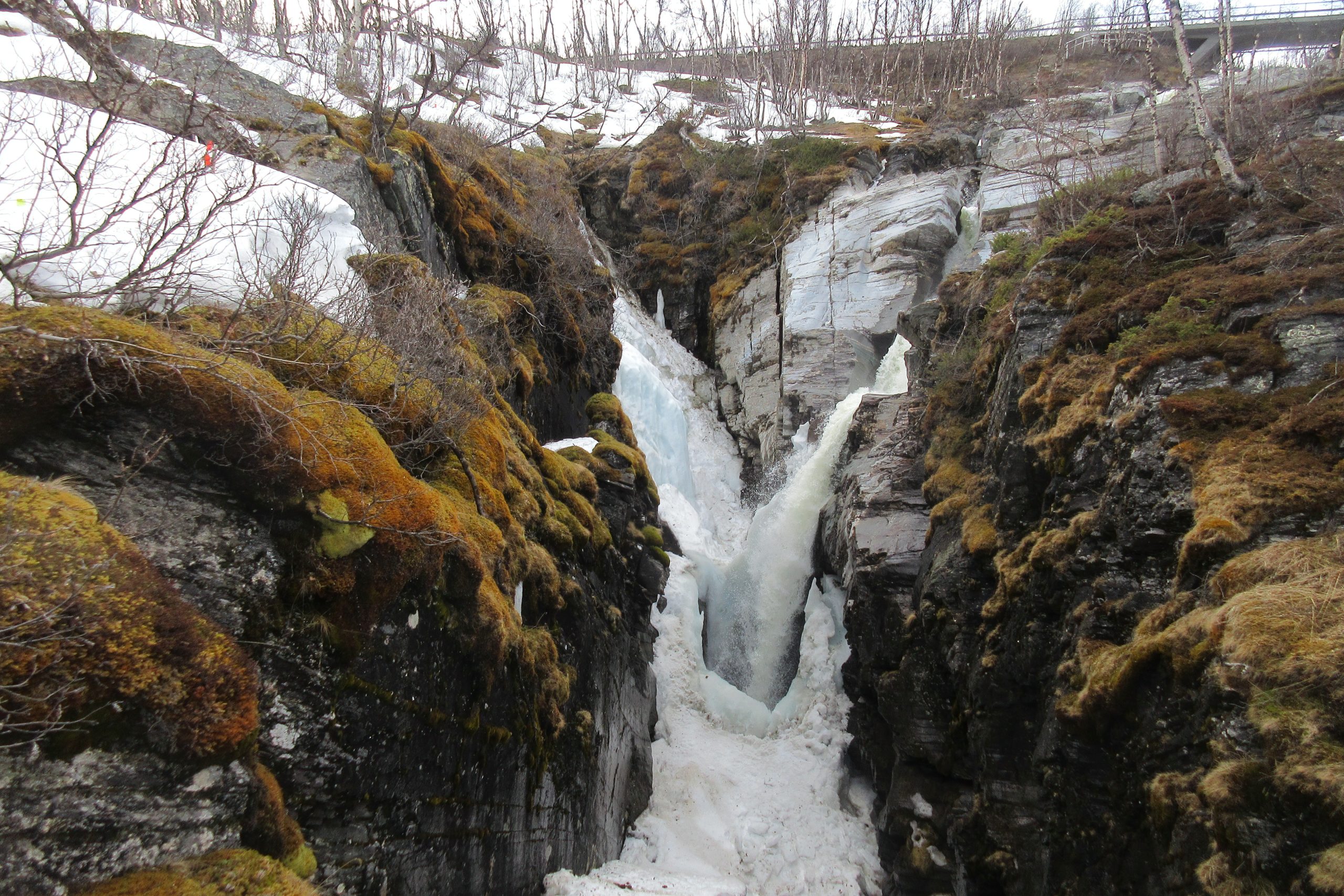In between snow piles the ground is rich in springy green growth and even berries. No matter how hard greenery fights to come back there’s still plenty of winter left to lose, so we’re living in two very different worlds. This afternoon was 18 degrees and sunny and I was hot in shorts, but we were soon up to our knees in snow and I was glad I was also wearing winter boots.
New grass is fighting its way to the surface through piles of soggy brown and yellow debris, which is why hares are wearing their in-between coats – not their beautiful winter white ones nor their summer brown ones, but their in-between patchy, piebald ones.

Everywhere there are in-between marvels to be seen. Rafts of ice bobbing up and down in rushing spring rivers, and huge solid snow and ice tunnels that water rushes through as it tumbles down the rocks.

Some in-between wonders are more threatening. Rivers running on top of lakes, for instance. As the temperatures rise, melting snow on the side of lakes falls on top of thick ice and creates a water channel. If you walk on the lake – where you know the ice is so thick there’s no danger of falling through for at least another month – you may experience your foot sinking through the top layer into water before reaching the solid ice. It isn’t a very pleasant experience.
We’ve been watching ‘slow TV’ recently, following elk moving to their summer pastures – a move which involves swimming across the river at some stage. The animals can be seen not quite taking the plunge yet, hesitating as they try out ice near the water’s edge. Sometimes the ice takes their weight, sometimes it alarms them by letting them sink through to another layer, and sometimes it gives in altogether and they get a short dip in the water before hauling themselves back onto the ice. They’re going to swim sooner or later so the ice testing is more about getting used to the idea of going in the water than about making a decision about the safety of the ice. But for us less hardy humans the failings of spring ice are a concern.
Pity the person with a house on an island, or on the other side of the river where there’s no bridge. All winter they manage very well with snow scooters, and all summer with boats, but right now they have to stay put. It’s a three or four week no-go time. A time to be pleasantly isolated in your house, or be prevented from visiting it.
In the old town some buildings are half up, half down, on their way to demolition, and in the new town some are also half up, half down, in the process of being built. You can’t rely on anything still looking like it did the last time you looked. These are also very uncertain, in-between times.
A couple of days ago we unpacked our things from the car and walked down to the edge of the frozen lake, hopeful for a late spring ski and lunch out on the ice. We glanced nervously at the glistening puddles and occasional slushy surface. We looked for reassurance from a passing snow scooter that seemed careless of the mixture of ice and water beneath as it roared past. Then we retreated inland, somewhere less in-between.

